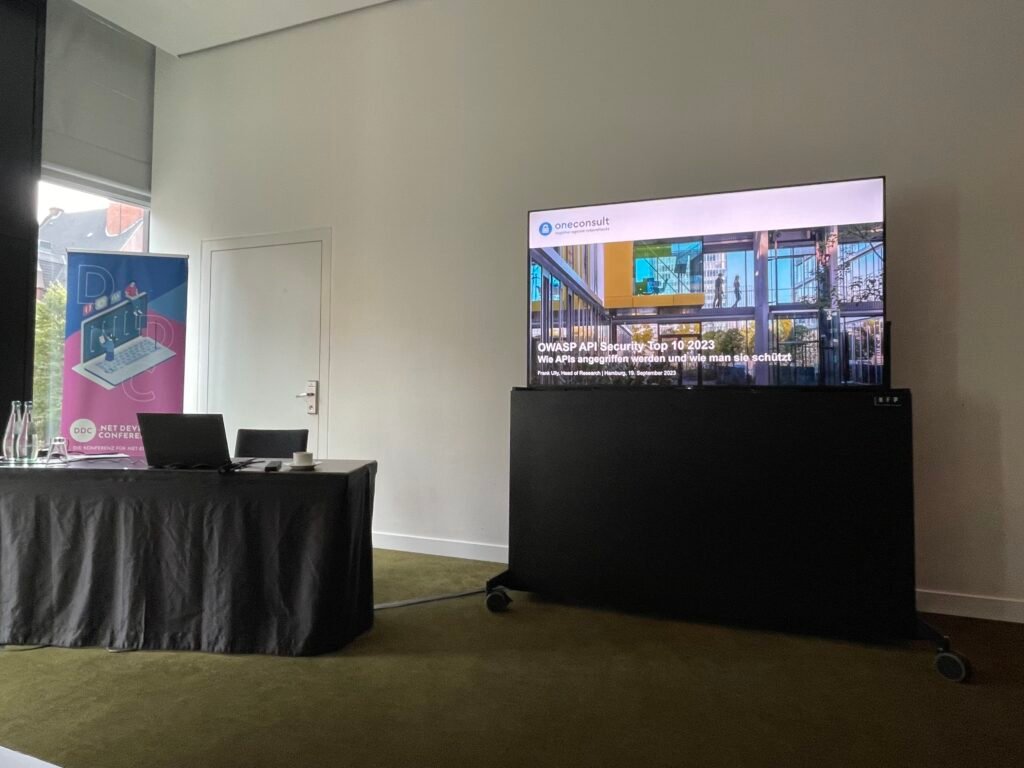Three days of Web Developer Conference in Hamburg. With many workshops, talks and dev sessions, the innovations in web development were presented. As different as the formats were, as extensive were the topics. From Clean Code to innovations in technology to AI with ChatGPT and GitHub Copilot. Nothing was left out.
The WDC in a nutshell
🏗️ Web Components
On the first day, I participated in a dev session about web components with TypeScript. From my point of view, Web Components can be a good alternative in some scenarios, unless you work with React. This framework is built on a virtual DOM that has nothing to do with the actual DOM that the web browser ends up displaying. Therefore, there are difficulties when working with the events or the content from elements, like the input element.
🌐 Web Sockets
Progressive Web Apps need data from the backend and can continuously receive new information from services through various approaches. Web Sockets are the future for this and scale well. Another big advantage of Web Sockets is the ability to communicate in real-time. However, you should still implement long polling as a fallback. Because currently web sockets are not supported by every browser/system.
Another interesting fact: Researchers are currently experimenting with the possibility of streaming entire websites to the client using Web Sockets.
🔐 Secure API development
The OWASP Top Ten are intended to create awareness. There is much more to secure software development, such as monitoring the supply chain (e.g., with Snyk) or adhering to certain principles: “Do not trust any data from third-party systems (internal or external).” Even trusted systems can be hacked, which can impact callers. Strict validation remains an important factor here.

🧠 News from AI development
With the OpenAI service from Azure, it is relatively easy to build a customized variant of ChatGPT for yourself. You can create a smart chatbot for your customer service for example. by entering your own data and specify what the AI responds to you have the control over the answers.
☁️ Bicep, Terraform, Pulumi – An overview of Infrastructure-as-Code
For those using Azure and getting into Infrastructure-as-Code (IaC), Bicep is a good tool to have on hand. Terraform is great for cross-cloud environments. However, you have to know how to cover state management. Pulumi seems to make sense when you deliver your application as a product.
🚧 Function-as-a-Service without Cold Start
Thanks to Fermyon Spin, you can write Rust Functions that are compiled to WebAssembly and thus start as fast as an arrow. In addition, these functions do not have to be hosted in the Fermyon Cloud, since you can also set up the systems on-premise. An SDK is available for many well-known languages (e.g. Go or TypeScript). But, it does not have to be used.
My personal highlight of the conference!
If you don‘t know what FaaS is, see my service description to Function-as-a-Service.
🧪 Test-driven development on the frontend?
TDD on the frontend is just as possible and even easier with Vitest than with Jest. Here, you can take Vitest as a drop-in replacement in the application and get a simplified mocking in addition. In the future, solutions like Playwright Components can cover the part where a browser is needed to test the component.
You’re interested in TDD. Check out my Test-Driven-Development services.
💻 Innovations in Next.JS
I had worked with Next.JS intensively during the development of my first website. But a lot has happened here in the last year. With the App Router, the project is now structured quite differently. But also the APIs are easier to write now. Each HTTP verb has its own method.
Conclusion
At the conference, I learned about many developments that would have otherwise passed me by in my day-to-day work. I will definitely take a closer look at Fermyon Spin, which seems to solve a big problem of FaaS. I also had the opportunity to see Hamburg again after almost 15 years and I am very excited about this city.

